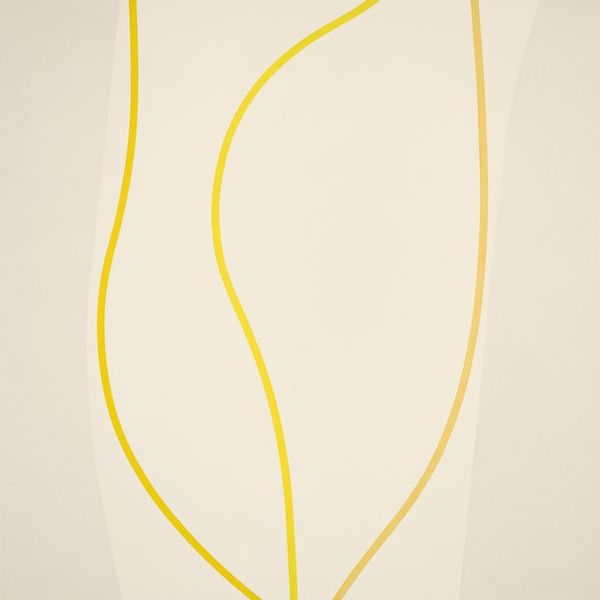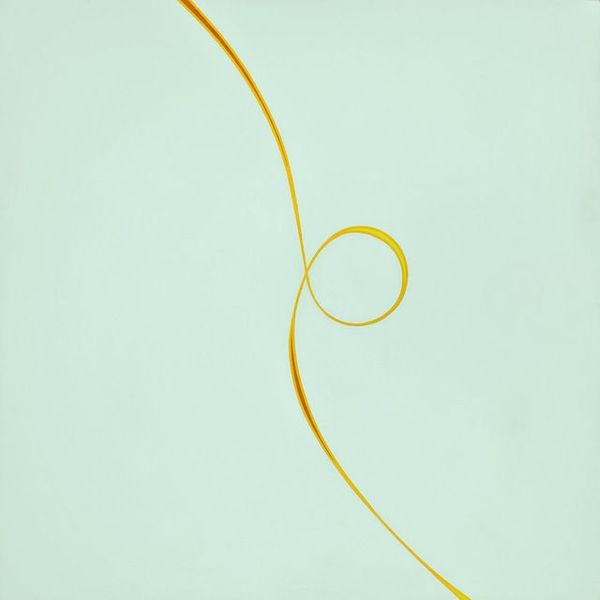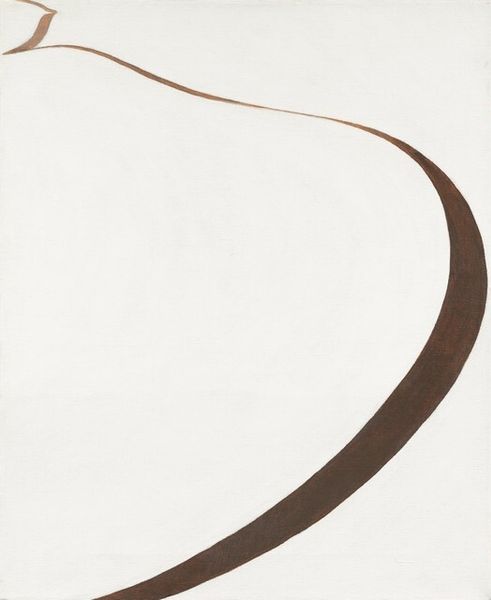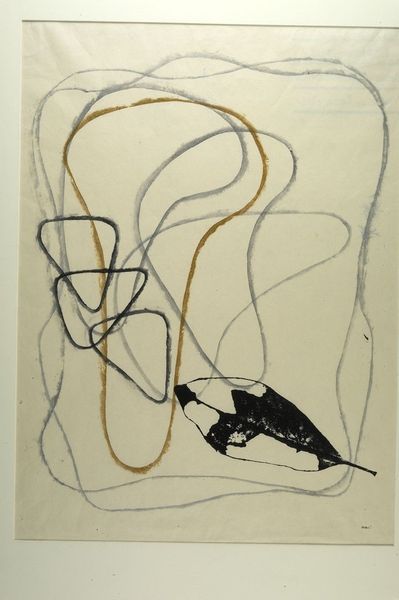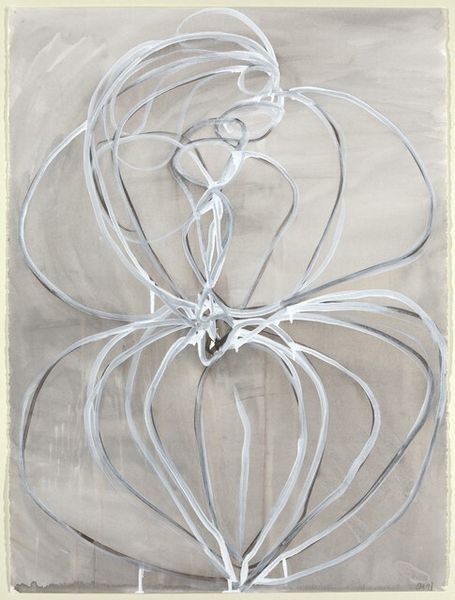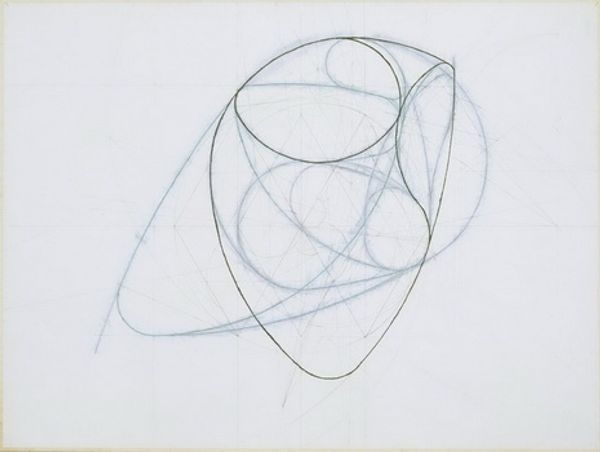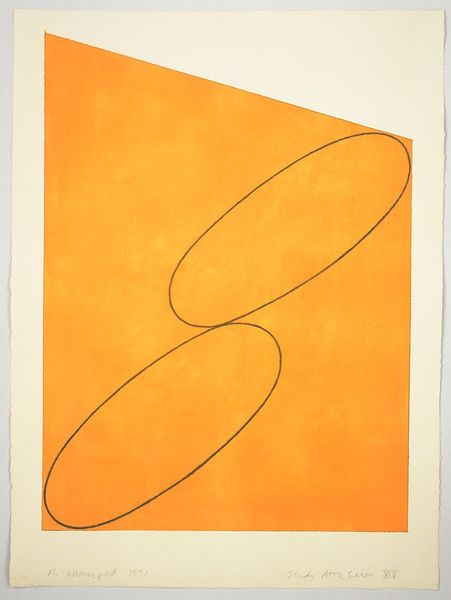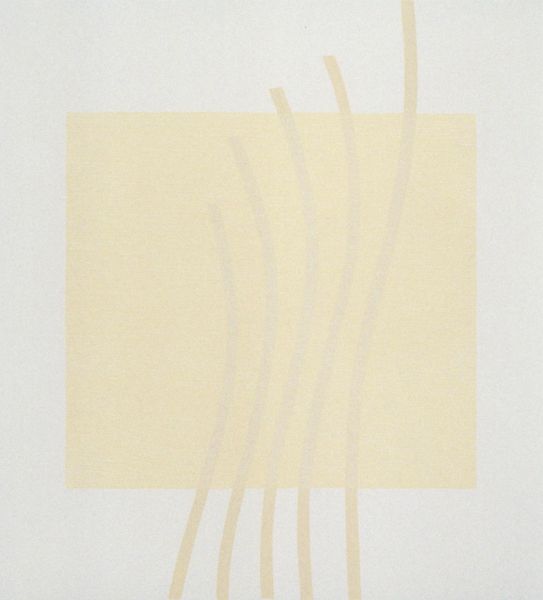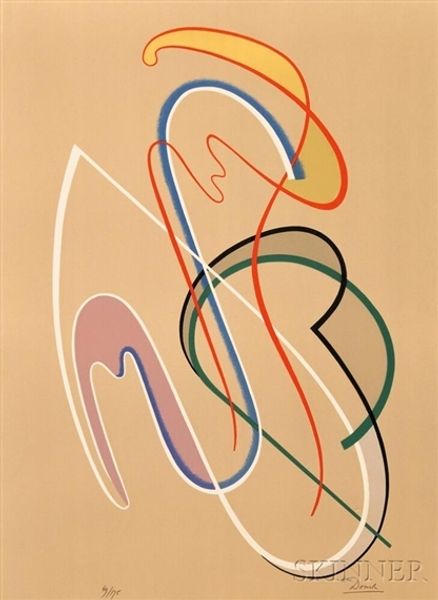
painting, acrylic-paint
#
painting
#
acrylic-paint
#
form
#
geometric-abstraction
#
abstraction
#
line
#
abstract art
#
modernism
#
hard-edge-painting
Dimensions: overall: 152.4 x 127.1 cm (60 x 50 1/16 in.) framed: 154.9 x 129.5 cm (61 x 51 in.)
Copyright: National Gallery of Art: CC0 1.0
Editor: This is an untitled acrylic painting by Lorser Feitelson, from 1964. The flowing lines create such a serene, almost meditative, effect. What visual symbols do you think Feitelson is using here? Curator: These curving lines against the subtle background act as potent symbols of freedom and unbound potential, wouldn't you agree? There’s a sense of continuous movement, referencing the changing cultural landscape of the 60s. The geometric elements are not rigid but rather fluid, suggesting adaptability. How does this visual vocabulary reflect the shift from representational art to abstraction? Editor: I see how the lines express freedom, yes. But the colors, mostly warm yellows, feel very calm, more comforting than revolutionary, or rebellious. Curator: Yes, precisely. The intentional colour palette helps in subtly embedding a sense of nostalgia; yellow represents warmth and the golden hues symbolize memory, calling to mind an idyllic past, and how the past continuously reshapes the future through a lens of personal history. The linear elements combined with geometric shapes… what emotions does it stir for you? Editor: The overlapping lines suggest how interwoven the past and the present are… they feel eternal. Curator: Indeed. This artwork uses geometric form as a potent tool for visual continuity and invites one to explore the nature of cyclical human experience. Thank you for pointing that out. Editor: I didn't expect to read so much depth into simple lines. That's the beauty of it, isn’t it? Curator: Absolutely! There is so much more that meets the eye, if you are only willing to pause and connect what you see with the wider canvas of art history.
Comments
No comments
Be the first to comment and join the conversation on the ultimate creative platform.

